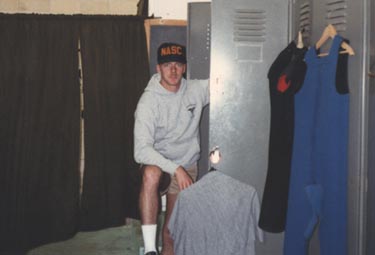
** Six pictures on this page, so please give it a few seconds to load...

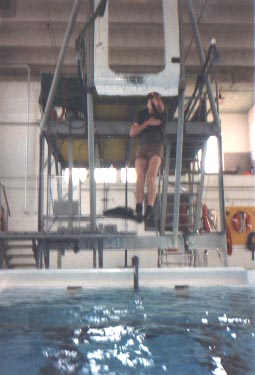 |
Although a lot of conditioning goes into being a Rescue Swimmer the ultimate test of the students' abilities was if they could successfully perform a rescue in a simulated environment. Students would begin a simulated rescue by jumping from the tower, which had an H-3 helicopter passenger door afixed to the front of it. |
| Once in the water, the student is required to clear their mask underwater. Usually, if they were tired, they would come to the surface and tip their mask to let the water run out of the bottom - hoping the instructor would not see... seldomly would they get away with it. |
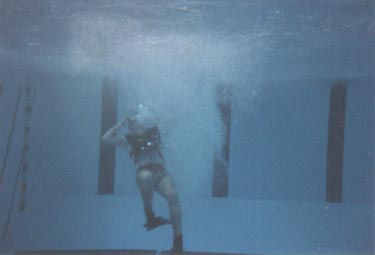 |
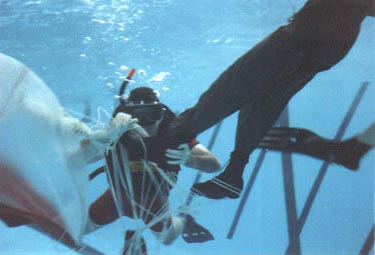 |
The next step was to assess the situation and go to work on those survivors. For most "real" rescues, the rescuee is usually sitting in a raft, parachute gone, just waiting to go. At the school, we made sure that every student got to see the worst-case scenario. This involved the person being rescued hopelessly entangled in parachute shroud lines. To the left we see AW2 Benny Giles ensuring enough shroud lines are wrapped around the survivor while the student tirelessly works away. |
| Grading was the necessary evil involved in the job. Here is one of the B Team - not sure who - writing down what the student did correct, but more often was the case, what they were doing wrong. Seems like we could stay underwater forever; at least, that's what our students thought. | 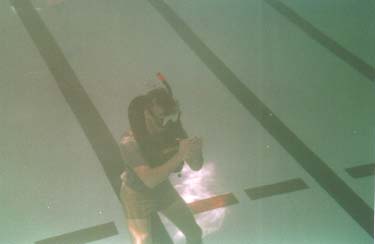 |
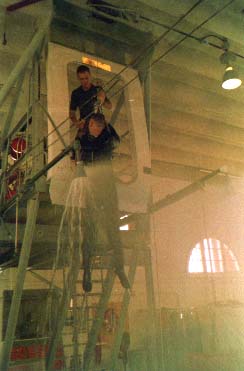 |
After the rescue was complete, the student, hopefully with his survivor, would be hoisted back up to the tower. There the fatigued student would begin medical treatment on a pretty battered survivor already staged in the helo (back of the tower).
Next page has a few more pictures, including SAR jumps from an H-1, the Sharkpit, and more. |